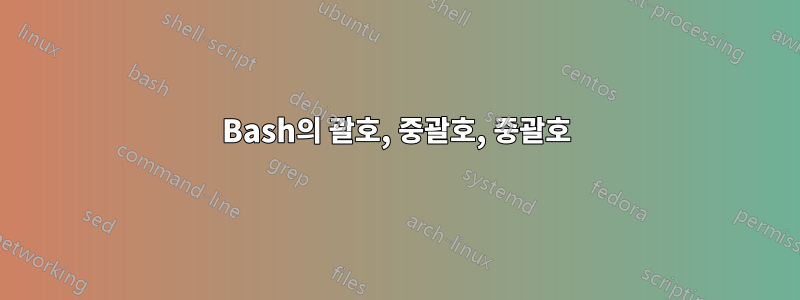
수수께끼는 다음과 같습니다.
만약 내가한다면:
touch file{1,2,3}
file1, file2, file3을 생성합니다.
그리고 만약 내가 그렇게 한다면
rm file[1-3]
삭제됩니다.
하지만 내가 그렇게 한다면
touch file[1-3]
그것은 다음을 생성합니다:
file[1-3]
왜?
답변1
글을 읽는데 어려움을 겪으셨다면맨페이지수수께끼를 만드는 대신:
Brace Expansion
Brace expansion is a mechanism by which arbitrary strings may be
generated. This mechanism is similar to pathname expansion, but the
filenames generated need not exist.
...
Pathname Expansion
After word splitting, unless the -f option has been set, bash scans
each word for the characters *, ?, and [. If one of these characters
appears, then the word is regarded as a pattern, and replaced with an
alphabetically sorted list of filenames matching the pattern (see
Pattern Matching below). If no matching filenames are found, and the
shell option nullglob is not enabled, the word is left unchanged.
...
Pattern Matching
Any character that appears in a pattern, other than the special pattern
characters described below, matches itself. ...
The special pattern characters have the following meanings:
...
[...] Matches any one of the enclosed characters. A pair of
characters separated by a hyphen denotes a range
expression; any character that falls between those two
characters, inclusive, using the current locale's
collating sequence and character set, is matched.
file[1-3]file1, file2, 라는 파일로 확장됩니다 file3. 파일 이름 확장은 일치하는 파일이 있는 경우에만 발생합니다. 그렇지 않은 경우 패턴은 그대로 유지됩니다. 따라서 , , 이라는 파일이 file1있으면 file2으로 file3확장 file[1-3]됩니다 file1 file2 file3. 이러한 파일이 없으면 확장되지 않고 file[1-3]. 을 사용하면 {...}파일 이름이 존재할 필요가 없으므로 파일의 유무에 관계없이 file{1..3}확장됩니다 .file1 file2 file3


